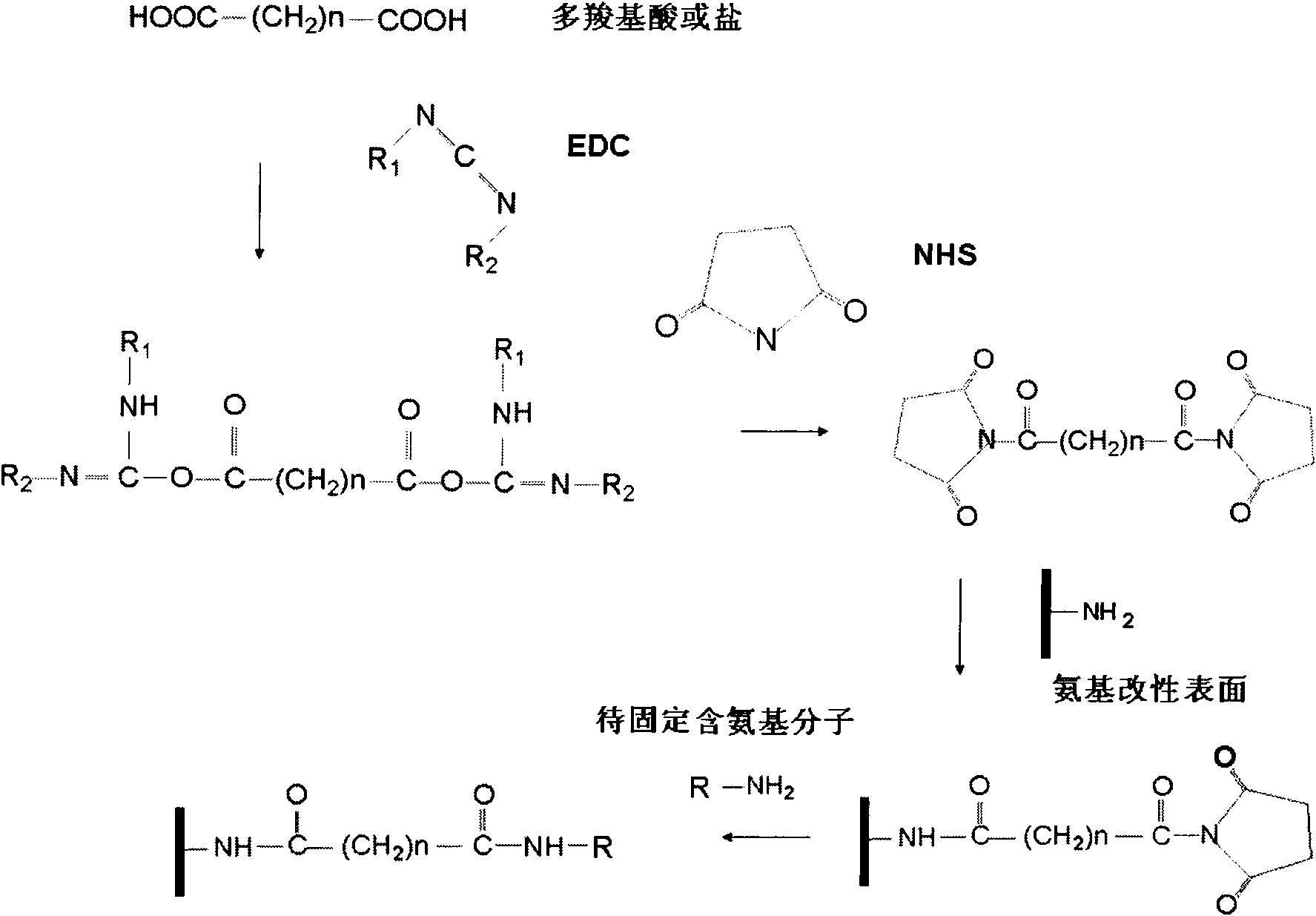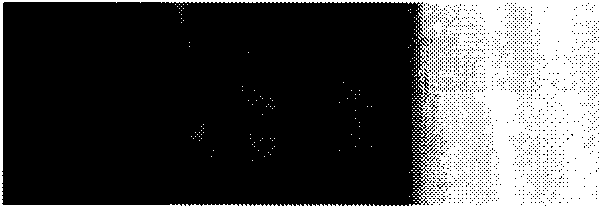Method for quickly immobilizing proteins or amino-contained molecules on aminated surface
An amino group-containing, fast technology, applied in chemical instruments and methods, carrier binding/immobilization of peptides, specific peptides, etc., can solve the problem that the density of activated carboxyl groups on the chip surface cannot be controlled, the efficiency of immobilizing proteins is inferior to that of aldehyde-based surfaces, and the processing time required. It can shorten the protein fixation time, the operation steps are simple and quick, and the surface modification steps are simplified.
- Summary
- Abstract
- Description
- Claims
- Application Information
AI Technical Summary
Problems solved by technology
Method used
Image
Examples
Embodiment 1
[0025] Example 1: Protein immobilization on the surface of aminated silicon wafer
[0026] Conventional methods carry out the amination modification on the surface of silicon wafers, specifically as follows: the cleaned silicon wafers were shaken for 30 minutes with concentrated sulfuric acid and hydrogen peroxide (volume ratio 3: 1), washed with water, and then transferred to 10% Aminopropyltriethoxysilane (APTES) ethanol solution was shaken for 2 hours, and after rinsing, the amino-modified surface was obtained. Prepare a 10mM aqueous solution of succinic acid, then dissolve NHS and EDC in the solution, so that the final concentrations of NHE and EDC are 50mM and 200mM, respectively, and react the mixed solution with the amino-modified surface for 5 minutes, wash with water and blow dry with nitrogen, Then react with the protein solution to be immobilized for 10 minutes. In order to detect the immobilized protein molecule, it can react with its antibody to enhance the detect...
Embodiment 2
[0027] Embodiment 2: immobilized chitosan on the surface of aminated silicon chip
[0028] Carry out aminolation modification on the surface of silicon wafers by conventional methods, prepare 10mM citric acid, then dissolve NHS and EDC in the solution, the final concentration of the two is 50mM / 200mM, and react the mixed solution with the amino-modified surface first After 5 minutes, wash with water, blow dry with nitrogen, and then react with chitosan (amino-containing polysaccharide molecules) solution for 10 minutes.
[0029] This embodiment is analyzed by atomic force microscopy, and the surface is indeed immobilized with higher density granular chitosan molecules, such as image 3 The atomic force microscope image of chitosan immobilized on the amino-modified surface is shown, and the surface particles are chitosan molecules.
[0030] In summary, the present invention is a method for immobilizing proteins or other amino-containing molecules on the surface of amino-modifi...
PUM
 Login to View More
Login to View More Abstract
Description
Claims
Application Information
 Login to View More
Login to View More - R&D
- Intellectual Property
- Life Sciences
- Materials
- Tech Scout
- Unparalleled Data Quality
- Higher Quality Content
- 60% Fewer Hallucinations
Browse by: Latest US Patents, China's latest patents, Technical Efficacy Thesaurus, Application Domain, Technology Topic, Popular Technical Reports.
© 2025 PatSnap. All rights reserved.Legal|Privacy policy|Modern Slavery Act Transparency Statement|Sitemap|About US| Contact US: help@patsnap.com



